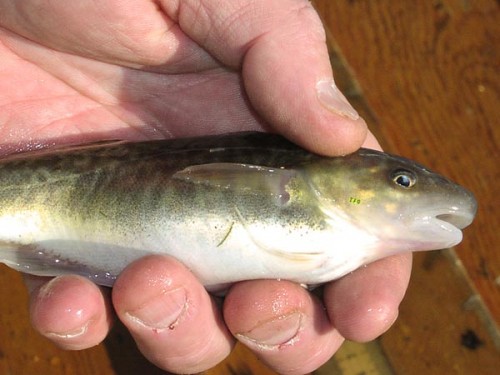
Fish in the Hudson River (US) have developed an immunity to polychlorinated biphenyls, a type of toxic chemicals developed in 1929. They’ve done so at an amazing speed:
“This is very, very rapid evolutionary change,” said Isaac Wirgin, an environmental toxicologist at New York University’s School of Medicine, and the study’s lead investigator. “Normally you think of evolution occurring in thousands to millions of years. You’re talking about all this occurring in 20 to 50 generations maybe.”The fish in question is called the tomcod, and scientists have determined the specific gene which has changed:
It turns out the fish sport a handy modification to a gene encoding a protein known to regulate the toxic effects of PCBs and related chemicals, called the aryl hydrocarbon receptor2, or AHR2.
The fish are missing six base pairs of DNA of the AHR2 gene, and the two amino acids each triplet would code for. PCBs bind poorly to the mutated receptors, apparently blunting the chemicals’ effects.
The adaptation occurs almost universally in Hudson River tomcod, but crops up only infrequently in two other tomcod populations—in Connecticut’s Niantic River and the Shinnecock Bay at Long Island’s south shore.

No comments:
Post a Comment